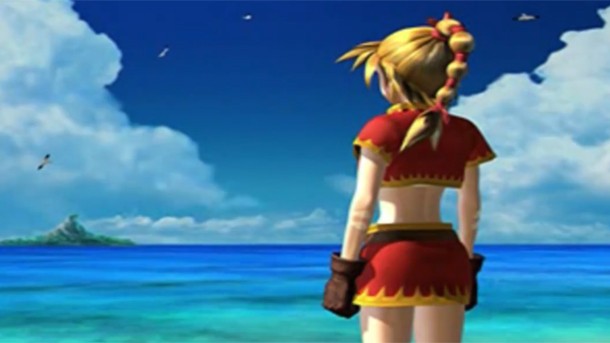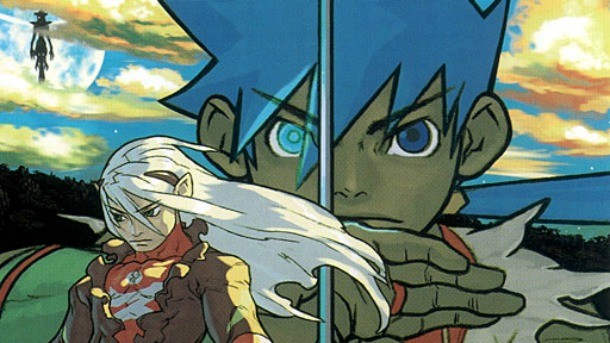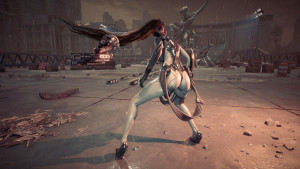Please support Game Informer. Print magazine subscriptions are less than $2 per issue
PS1 RPG Classics That Hold Up

Going back to your favorite game over a decade later can be tough. You realize that the graphics that you once thought were the most gorgeous to grace your screen are not only unimpressive, but downright ugly. Gameplay systems often crumble under the weight of years and stories just don’t carry the same weight they once did. You begin to see the evolution of how far games have come, which can not only be eye-opening, but also mystifying.
But every so often, certain classics break through the barrier of age. Although no game ages perfectly, plenty of titles are still fun to play today, offering a great walk down memory lane. As an RPG fan, I often get asked what classics still hold up. Below is a collection of some of my favorite PS1 RPGs that haven’t let age destroy their legacy, and you can find them for a pittance on PSN.
Note: This list is based off of games available as PSone Classics on PSN.

Final Fantasy IX (Released November 14, 2000) – While just about any Final Fantasy game from the PS1 era is worth playing (though beware of Final Fantasy VII’s lack of analog controls) Final Fantasy IX stands above the rest. The adventures of Zidane and company nod back to the roots of the Final Fantasy series while providing plenty of modern tweaks to the battle system and overworld. Everything from the tortured villain to the idiosyncratic characters to the classic environments still shine. I simply can’t endorse Final Fantasy IX’s card game Tetra Master, though. Triple Triad from VIII is much better.

Grandia (Released September 30, 1999) – The coming of age story about a young adventurer named Justin might not have made Grandia a vanguard, but it still remains a memorable PS1 RPG. Part of that is due to the hybrid turn-based/real time combat, which was well ahead of its time. Focusing on countering your opponents is a must; if you attack them with certain abilities just as they begin to strike, their turns are delayed significantly. If only more games held the same mix of strategy and tension. Sadly, we haven’t seen another entry in the series since 2006’s Grandia III, which is a shame considering how the series embraced making the traditional battle system anything but ordinary.

Breath of Fire IV (Released April 27, 2000) – I wish Capcom’s Breath of Fire series would make a resurgence. Breath of Fire IV’s sprites-on-3D-backgrounds style and gorgeous character artwork prove that beauty isn’t dependent on polygon counts alone. Additionally, the leveling system, where each character can apprentice under different masters found across the world, provides depth far beyond many modern RPGs. Combat is fairly classic, but luckily it’s of no detriment to the enjoyment of this title.

Chrono Cross (Released August 15, 2000) – Chrono Cross may not have been the sequel to Chrono Trigger that fans expected, but it was certainly one of the best games of the time. That’s no less true today; the focus on shifting the elemental status of the battlefield complements the character customization. The environments are nothing short of breathtaking and amongst them are nestled a handful of particularly interesting characters (although it’s a shame more generic ones flood the journey). Still, Serge’s story is one worth seeing and experiencing. If Chrono Cross were to reappear today with no changes besides new character models and upscaled environments, I would be a happy camper.
[Next up: Mechs in the wild west, collecting 108 Stars, and exploring storybook visuals...]

Wild Arms (Released April 30, 1997) – As one of the first top-tier RPGs on the PS1, you might expect Wild Arms to have held up about as well as Beyond the Beyond – which is to say not well at all. However, the combination of classic RPG tropes, intriguing use of puzzles in dungeons, and riveting battle system keep Media.Vision’s classic worth playing. Some rough spots are unavoidable – the battle graphics are laughably simple and the characters are fairly one dimensional – but the package as a whole is remarkably memorable. After all, outside of Wild Arms, how many series have mechs in the wild west?

Suikoden (Released December 3, 1996) – Recruiting 108 Stars of Destiny is just as fun today as it was in 1996. So is the political corruption that ensues, where the young son of a general must build an army to restore peace to the Scarlet Moon Empire. Suikoden gets a lot right with its balanced encounter rate and customization options with runes. The battle system takes you back to simpler times, which isn’t bad as you still need to strategize, especially against bosses – the unite option where two members team up is essential. Dungeons haven’t aged gracefully, but great ideas abound. Most of all, it’s exciting to see the series’ roots and, of course, watching your headquarters grow never gets old.

Vagrant Story (Released May 15, 2000) – Just about any Yasumi Matsuno project holds up well, but Vagrant Story reminds us exactly why he is a mastermind in the field. Focused around an element called Risk, Vagrant Story charges players with deciding whether additional critical strikes are worth a loss of accuracy and defense. The longer you attack a single enemy, the more damage you can do – or can be dealt to you. The crawl might not look like much today, but with its labyrinthine dungeons, challenging puzzle rooms, and intriguing battle system, Ashley Riot’s story is one worth reliving.

Legend of Mana (Released June 7, 2000) – Legend of Mana stands out for being a gorgeous game with its storybook visuals and inviting colors. Restoring the legendary Mana tree to its former glory is still exciting and Legend of Mana keeps you connected to its world as you rebuild it by finding and placing ancient artifacts. Its setup is akin to a book full of short stories: You have brief experiences, some more memorable than others, which build into the greater narrative. Although the combat might not be as inventive as it once was, especially with having to line-up attacks precisely to hit enemies, it’s still a beautiful game that makes you feel like you’re writing the pages to its story.
What are some of your favorite PS1 RPG Classics? Let us know in the comments below.










